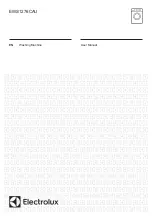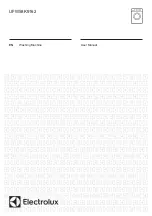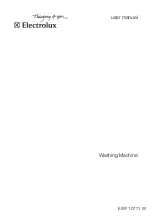
Programming Manual
GLASSFRONT VENDING MACHINES
Rev. 1.12
MODELLS: G-DRINK SVE GF6 / GF9 – DR6 / DR9
Page 11 of 42
ACCEPTOR ERROR ROUTINE
If the ENTER button is activated at the "ACCE" prompt the VMC will display a "EE"
message indicating excessive escrow attempts (escrow to vends greater than a pre-
determined supplier standard), and "NJ" message indicating a coin jam (sensed and
reported by coin mechanism), or a "LA" message indicating a low acceptance rate. Using
the UP or DOWN buttons will cycle through all acceptor errors. If the ENTER button is
pressed and held for two seconds during the display of any error code , that code will be
cleared.
After clearing VMC will display the next existing error, or "NONE" if no other error.
Activation of HOME button will return the VMC to the code level at the "ERROR" message.
BILL VALIDATOR ERROR ROUTINE
If the ENTER button is activated at the "BVAL" prompt the VMC will display a "BC"
message indicating a bill validator communication error, a "BFUL" message indicating
that the bill stacker is full, a "BILL" message indicating a defective motor, a "BJ"
message indicating that there is a bill jammed in the bill validator, a "BRCH" message
indicating a checksum error, a "BOPN" message indicating an open cash box, or a "BS"
message indicating a bill sensor error. The first column that has been detected with a
home sense error. Using the UP or DOWN buttons will cycle through all bill validators
errors. If the ENTER button is pressed and held for two seconds during the display of any
error code that code will be cleared.
After clearing VMC will display the next existing error, or "NONE" if no other error.
Activation of HOME button will return the VMC to the code level at the "ERROR" message.
INDEPENDENT COOLING UNIT SETTING
The cooling unit is managed by an independent control unit, including LED display
and buttons.
If a different temperature is required inside the refrigerated cell, it is sufficient to change
the set-point on the electronic control unit, always keeping present the small variation of
temperature caused by the starting and stop cycles.
Example:
If an average product temperature of 8°C is needed,
program the “set-point” at 7°C
Please refer to the instruction at the end of this manual.













































